Scottish Land Fund: evaluation
Independent evaluation of the Scottish Land Fund, commissioned by the Scottish Government and carried out by Mark Diffley. It reviews the operation of the fund and makes recommendations for the future.
The Scottish Land Fund: Application Overview
Summary
The spread of successful applications by urban rural classification is an important barometer for groups making applications and for the of stakeholders engaged in this evaluation. The analysis above shows a broadly similar spread between all areas in terms of both the proportion of total successful applications and the proportion of total sums awarded. For example, large urban areas account for 8% of successful applications and 9% of total sums awarded, while at the other end of the spectrum, remote rural areas accounted for 57% of total applications and 59% of total sums awarded.
Overview of management information
Stage 1: Applications
In total, there were 493 applications for Stage 1 funding between 2016-21, which is broken down by year in Table 1 below. Please note, one application in 2016-17 was withdrawn before a decision was given. Success at Stage 1 can take one of two forms; awarded funds or invited to continue to Stage 2, if no technical funding is required.
| Year | Successful | Not successful | Total | |
|---|---|---|---|---|
| Awarded funds | Invited to continue | |||
| 2016-17 | 54 | 33 | 21 | 109 |
| 2017-18 | 55 | 13 | 23 | 91 |
| 2018-19 | 50 | 31 | 29 | 110 |
| 2019-20 | 65 | 30 | 26 | 121 |
| 2020-21 | 30 | 22 | 10 | 62 |
| Total | 254 | 129 | 109 | 493 |
The number of applications varied by project type, with over half (52%) seeking funding for a building and only 30% requiring funding for land. The full breakdown of application by type of project is shown in Figure 1 below.
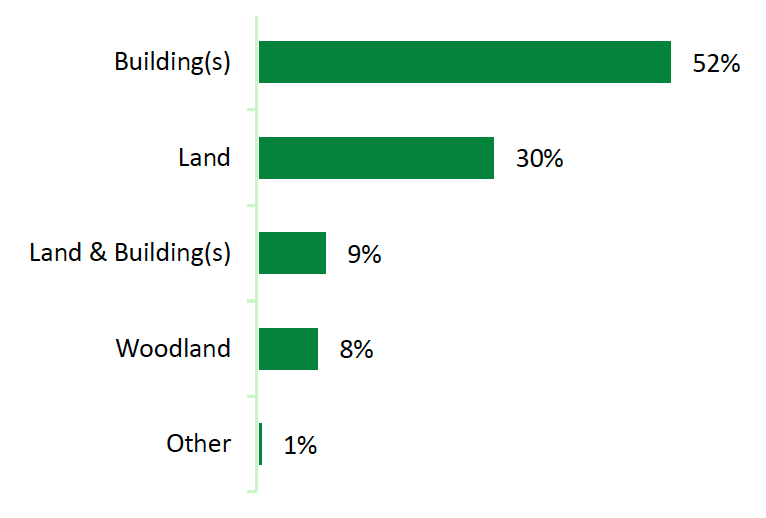
As with type of project, there was some variation in the number of applications received by urban rural classification. The breakdown of the 6-fold Scottish Government Urban Rural Classification is shown in Table 2 below.
| Class | Class Name | Class Acronym | Description |
|---|---|---|---|
| 1 | Large Urban Areas | LUA | Settlements of 125,000 people and over |
| 2 | Other Urban Areas | OUA | Settlements of 10,000 to 124,999 people |
| 3 | Accessible Small Towns | AST | Settlements of 3,000 to 9,999 people, and within a 30 minute drive time of a Settlement of 10,000 or more |
| 4 | Remote Small Towns | RST | Settlements of 3,000 to 9,999 people, and with a drive time of over 30 minutes to a Settlement of 10,000 or more |
| 5 | Accessible Rural Areas | ARA | Areas with a population of less than 3,000 people, and within a 30 minute drive time of a Settlement of 10,000 or more |
| 6 | Remote Rural Areas | RR | Areas with a population of less than 3,000 people, and with a drive time of over 30 minutes to a Settlement of 10,000 or more |
Over half (56%) of the total applications came from those in remote rural areas (6 – RR). As shown in Figure 2 below, only 17% of the total applications came from those in urban areas (1 – LUA or 2 – OUA).
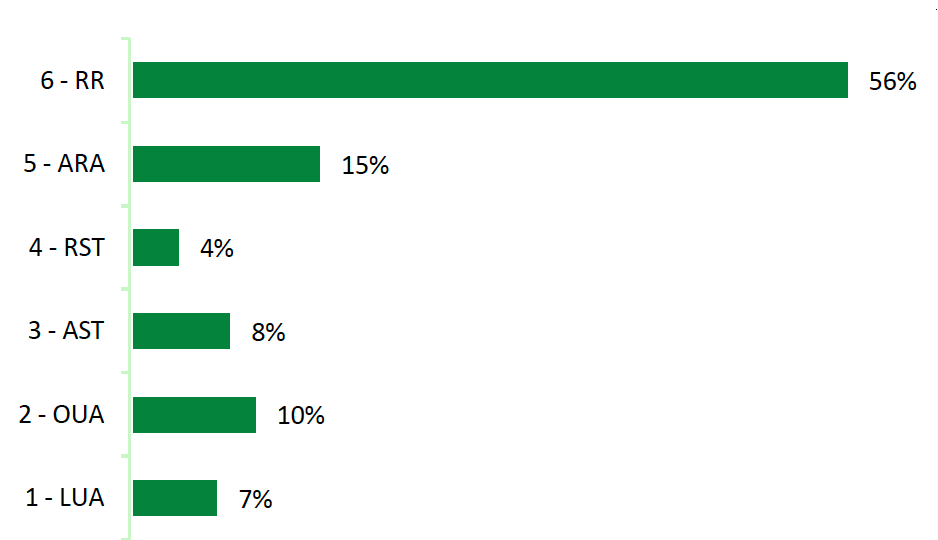
Successful applicants
Successful applicants are both those who are awarded funding immediately and those who are invited to continue to Stage 2 of the funding process; this comprises 383 applicants to the fund at stage one. Those who are invited to continue to Stage 2 have not applied for technical assistance funding to develop their project. Figure 3 shows that of those who have been deemed successful, two thirds (66%) have been awarded funding and a third (34%) were invited to continue without requesting technical assistance.
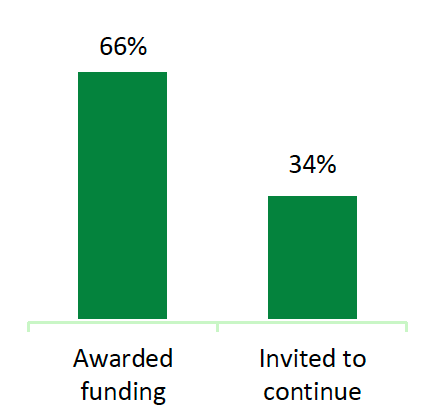
This split could be useful for future subgroup analysis; all applicants go through the same processes when applying for the fund and must go through Stage 1 to access Stage 2, however those who access funding through Stage 1 of the process may have different experiences and perceptions of the fund than those who did not access funding at Stage 1.
When considering those projects which were successful at stage one, the proportions remain largely the same within type of project. Over half (53%) of all projects successful at stage one are for the acquisition of a building.
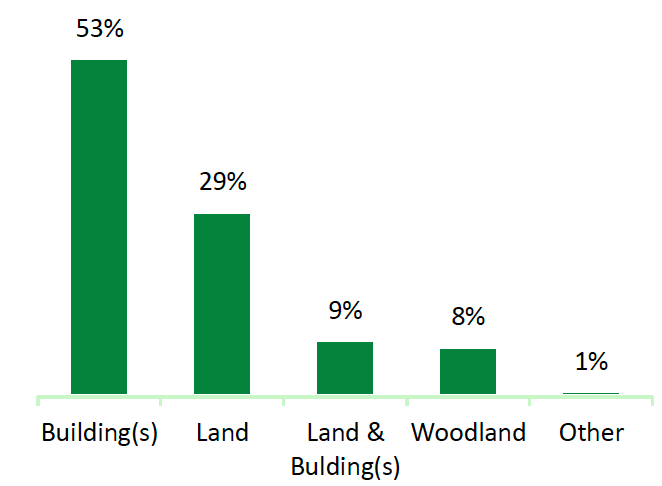
Successful applicants tend to be from those in remote rural areas (58%), which is in line with the overall number of applications.
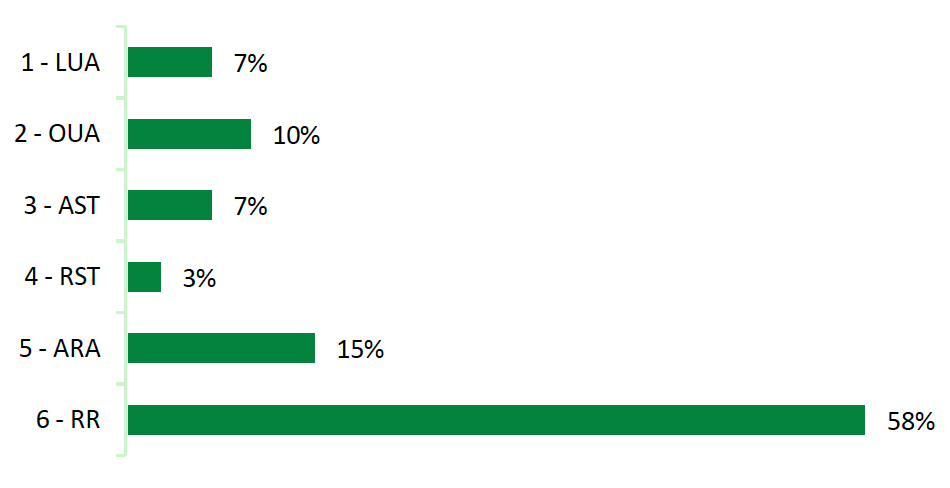
As shown in Figure 6 below, 82% of applications made in Large Urban Areas are successful and four out of five applications (80%) of total applications in Remote Rural areas are successful. Remote Small Towns have the lowest success rate, with less than two thirds of all projects in this area being successful at stage one. Please note, when considering successful applicants this refers to both those who were awarded funding at stage one or invited to continue to directly to stage two, without receiving technical funding.
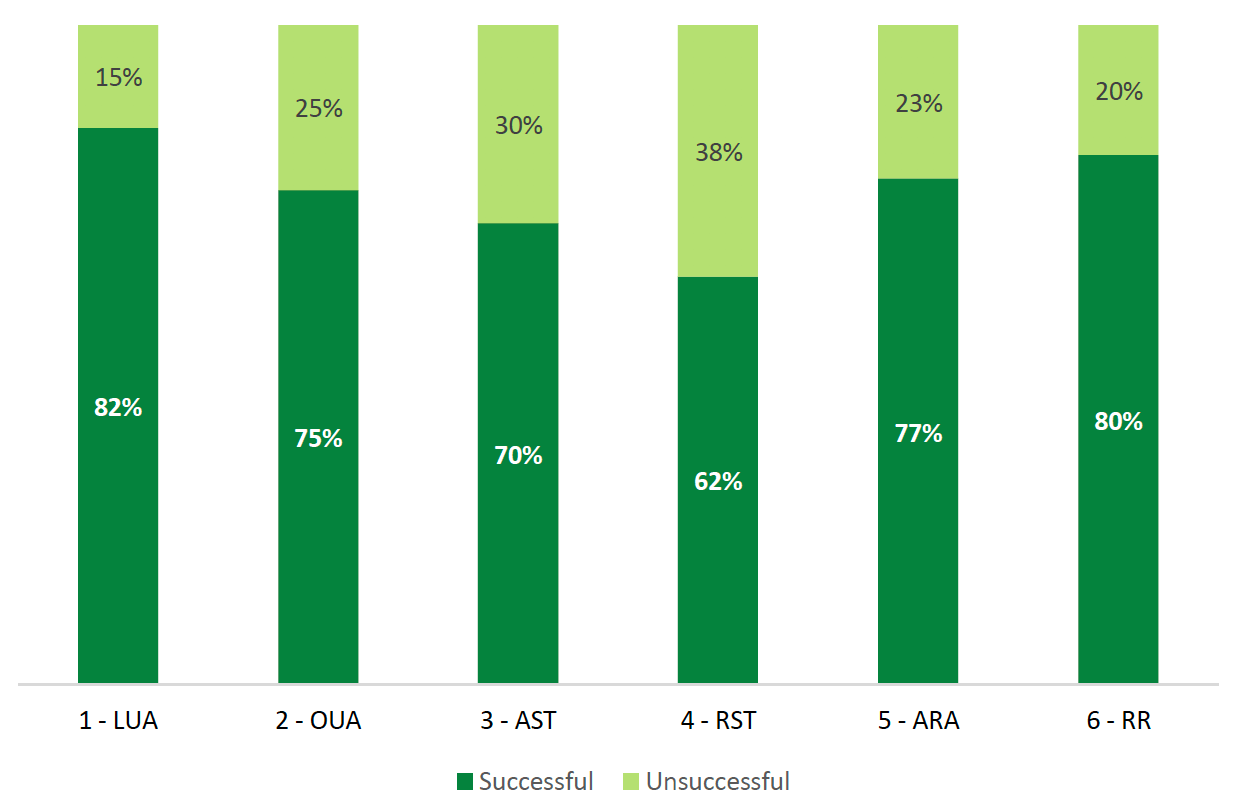
Community Groups
Repeated applications, especially within those who were unsuccessful at their first attempt is encouraged. In total there were 64 community groups with more than one application to the fund, accounting for 137 total applications. A total of 43 of these applications were unsuccessful, and several community groups were awarded funding or invited to continue to stage two on more than one occasion, for different projects. There were five groups who did not receive any funding despite submitting multiple applications.
| Multiple Applications | Number of groups | Successful | Invited to continue | Unsuccessful | Total |
|---|---|---|---|---|---|
| 2 applications | 55 | 51 | 23 | 36 | 101 |
| 3 applications | 9 | 11 | 9 | 7 | 36 |
| Total | 64 | 62 | 32 | 43 | 137 |
Stage 2 Applications
As discussed previously, community groups who wish to receive funding for an acquisition must go through stage one before proceeding to stage two. However, once stage one funding has been awarded or an invitation to continue to stage two has been issued it is not compulsory to apply for Stage 2 funding. The total number of applications for Stage 2 funding is summarised in Table 4 below.
| Year | Successful | Re-applied and successful | Unsuccessful | Total |
|---|---|---|---|---|
| 2016-17 | 32 | 0 | 3 | 35 |
| 2017-18 | 38 | 0 | 2 | 40 |
| 2018-19 | 53 | 5 | 3 | 61 |
| 2019-20 | 46 | 4 | 7 | 57 |
| 2020-21 | 62 | 2 | 6 | 70 |
| Total | 231 | 11 | 21 | 263 |
Given that 383 applicants were successful at stage one, 31% of applicants did not apply for funding at stage 2 of the process. This is due to a number of reasons, including project viability, community support, and timing of the SLF.
Successful applicants
Over half (57%) of the successful applicants for Stage 2 funding are from remote rural (6-RR) areas and the funding which they receive is 59% of the overall funding awarded. Those in accessible small towns (3 – AST) and remote small towns (4 – RST) only comprise 7% of the total applications for Stage 2 funding, and they only receive 6% of the overall funding awarded. The full breakdown is show in Table 5.
| UR Category | Successful Projects | Total sum awarded | Average per project | Minimum awarded | Maximum awarded | % of total awarded |
|---|---|---|---|---|---|---|
| 1 – LUA | 21 | £3,673,469.00 | £174,927.10 | £33,000.00 | £647,500.00 | 9% |
| 2 – OUA | 20 | £4,941,676.00 | £247,083.80 | £56,100.00 | £648,300.00 | 13% |
| 3 – AST | 10 | £1,758,701.00 | £175,870.10 | £25,000.00 | £628,800.00 | 5% |
| 4 – RST | 7 | £694,111.00 | £99,158.71 | £15,750.00 | £270,000.00 | 2% |
| 5 – ARA | 41 | £4,798,849.00 | £117,045.10 | £10,000.00 | £394,000.00 | 12% |
| 6 – RR | 132 | £23,090,468.00 | £174,927.79 | £11,900.00 | £4,415,200.00* | 59% |
| Total | 231 | £38,957,274.00 | £168,646.21 |
*This was an exception to the current limit of £1million. Excluding this value the maximum value awarded to an individual project in a Remote Rural area was 1,049,588.
Contact
Email: crtb@gov.scot
There is a problem
Thanks for your feedback